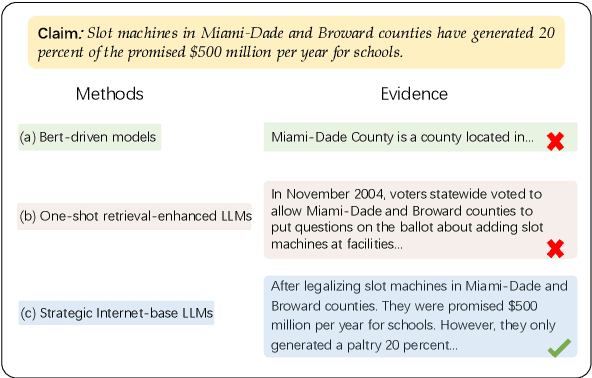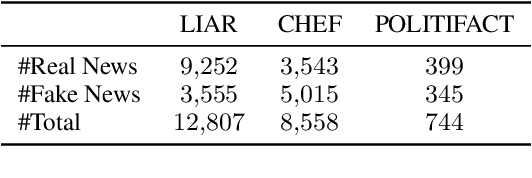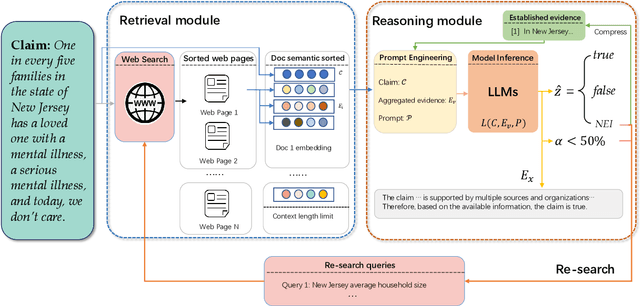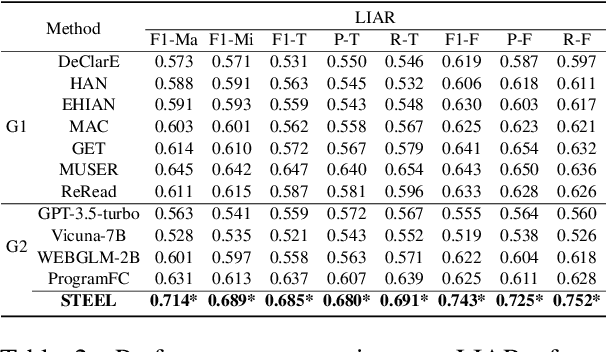Re-Search for The Truth: Multi-round Retrieval-augmented Large Language Models are Strong Fake News Detectors
Paper and Code
Mar 14, 2024



The proliferation of fake news has had far-reaching implications on politics, the economy, and society at large. While Fake news detection methods have been employed to mitigate this issue, they primarily depend on two essential elements: the quality and relevance of the evidence, and the effectiveness of the verdict prediction mechanism. Traditional methods, which often source information from static repositories like Wikipedia, are limited by outdated or incomplete data, particularly for emerging or rare claims. Large Language Models (LLMs), known for their remarkable reasoning and generative capabilities, introduce a new frontier for fake news detection. However, like traditional methods, LLM-based solutions also grapple with the limitations of stale and long-tail knowledge. Additionally, retrieval-enhanced LLMs frequently struggle with issues such as low-quality evidence retrieval and context length constraints. To address these challenges, we introduce a novel, retrieval-augmented LLMs framework--the first of its kind to automatically and strategically extract key evidence from web sources for claim verification. Employing a multi-round retrieval strategy, our framework ensures the acquisition of sufficient, relevant evidence, thereby enhancing performance. Comprehensive experiments across three real-world datasets validate the framework's superiority over existing methods. Importantly, our model not only delivers accurate verdicts but also offers human-readable explanations to improve result interpretability.
 Add to Chrome
Add to Chrome Add to Firefox
Add to Firefox Add to Edge
Add to Edge